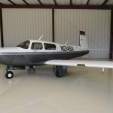Climb Setting question
-
Members Online
- richardbrochu27
- bluehighwayflyer
- FastGlasair
- LANCECASPER
- georgewdean1020
- EricJ
- SilentT
- TCC
- Niko182
- mariosmt
- 00-Negative
- kortopates
- Mscheuer
- da3b242
- 802flyer
- Sense
- 201er
- Paul Thomas
- Aviationist
- Jeremyjford
- oregon87
- redbaron1982
- CamMac
- Mellow_Mooney
- Ibra
- natdm
- 7.Mooney.Driver.0
- aviatoreb
- Mark Staggs
- vik
- PT20J
- Shadrach
- wivika2537
- alexz
- CAV Ice
- RescueMunchkin
- Bolter
- Ragsf15e
- mooniac58
- FJC
- MatthiasArnold
- FloridaMan
- skykrawler


Recommended Posts
Join the conversation
You can post now and register later. If you have an account, sign in now to post with your account.